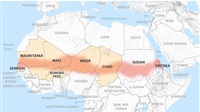Is the worst of the pandemic behind us? Here's what scientists know

Over the
weekend, there were no new deaths from coronavirus in London, Scotland or Northern
Ireland. Slowly, the number of hospitalisations and deaths is falling across
the UK. Rather than celebrating these early signs that the worst of the
pandemic could be behind us, however, some scientists are warning of a second
wave of infections – an increase in coronavirus cases in the coming weeks or
months, which could occur even after a sustained fall in the number of cases.
These
warnings often refer back to the 1918 flu pandemic. That outbreak killed tens
of millions of people when it returned the following winter in a deadlier form
after the first outbreak had been controlled. But there’s a confusing lack of
consensus from scientists about whether we’ll see a second wave of coronavirus
cases. Although the future is uncertain, we can imagine four scenarios for what
might come next.
One
hypothesis, floated by doctors in Italy, is that coronavirus could grow weaker
as it spreads. Through viral mutation, Sars-Cov-2 could lose its potency and
become milder or less infectious. But coronaviruses have proven a remarkably
stable type of virus. There is no evidence to support this kind of mutation
occurring in a matter of years, let alone weeks. Rather than viral mutations,
improvements in survival rates in Italy are probably related to better clinical
management of Covid-19, as doctors learn how to treat patients in hospital more
effectively.
Another view
is that the number of people susceptible to this virus is smaller than
estimated, either because a large section of the population has already been
exposed to it, or because they’ve developed cross-immunity from other similar
viruses. This scenario also seems unlikely. Early serology tests estimated that
only 17% of Londoners and 5% of the UK population had been exposed to the virus
in late May. This means that there is still a large percentage of the
population who have not yet had the chance to build immunity, a picture that
corresponds with serology studies from France, Spain and Sweden, which had
similar results.
But the
picture might be more complex. A recent study reported that individuals who had
never been exposed to Sars-Cov-2 still had T-cells reacting to the virus,
another key component of the body’s immune response. The authors of the study
suggested that having previous exposure to common cold coronaviruses could mean
the body is able to detect the proteins in the Sars-Cov-2 virus. While this
finding could be promising, there is still no evidence that either antibodies
or T-cell reactivity would result in someone developing immunity to Sars-Cov-2.
A third
approach, which has been deliberately adopted in Sweden, is to let the virus
run its course and spread through the population. This treats Covid-19 much
like the influenza virus; until a vaccine becomes available or enough of the
population is exposed that herd immunity develops, the virus will be
unstoppable.
But the cost
of allowing the virus to spread through the population until it develops herd
immunity is that many people will become ill or die as a result of catching
Covid-19. And with no confirmation on how long immunity would even last, this
approach offers no certainty about whether people could become reinfected after
a couple of months or years – leading to a second wave of infections.
My own view
is that we can avoid a second wave if governments aggressively contain the
virus through testing, tracing and isolating carriers, and by encouraging good
hygiene, such as hand-washing and environmental disinfection, supported by
physical distancing where it’s needed. The goal is to drive down numbers of
cases to a low level so that transmission is limited to discrete, containable
outbreaks with the ultimate goal of elimination.
Think of this
as a series of constantly emerging small fires that need to be extinguished
quickly before they turn into an uncontrollable blaze. South Korea and Germany
have effectively run with this approach, rolling out mass testing and tracing
strategies, isolating carriers of the virus and implementing monitoring systems
to map its spread.
But the focus
on deaths from a second wave may miss the real toll of the virus: the long-term
damage it can cause to the lungs, heart, kidneys, brain and even blood vessels
among those who recover. This is emerging as one of the horrors of Covid-19. It
is often forgotten that Covid-19 is a new virus, completely different to the
flu, and that it might have longer-term health impacts that will only be
identified in months or years.
If
coronavirus is our generation’s polio, we might look towards the approach taken
by governments in the Pacific. New Zealand has eliminated coronavirus, and
Australia is inching closer to this goal. With border checks in place, people
living in these countries can return to normal life. Sports matches are taking
place in New Zealand, schools have reopened, weddings are being booked and
people can safely see relatives.
The successes
of New Zealand and Australia might force other countries to rethink their own
strategies, and the feasibility of eliminating the virus within their borders.
Instead of living with a constant threat of Covid-19, people might start asking
their own governments – why not try to get rid of it altogether?







